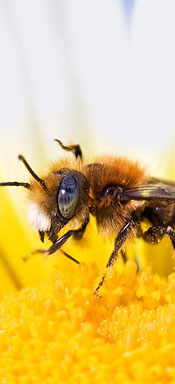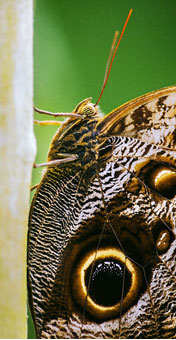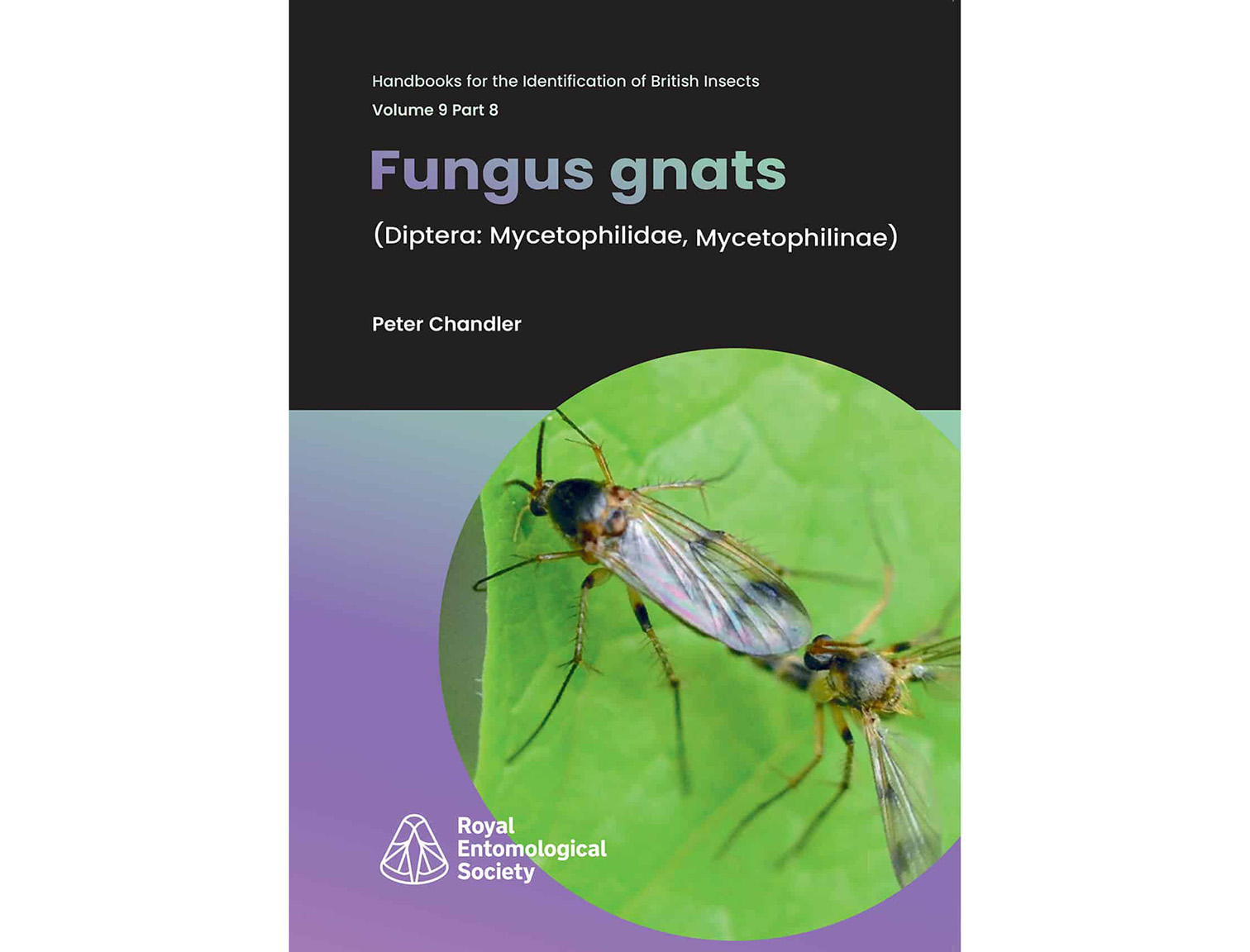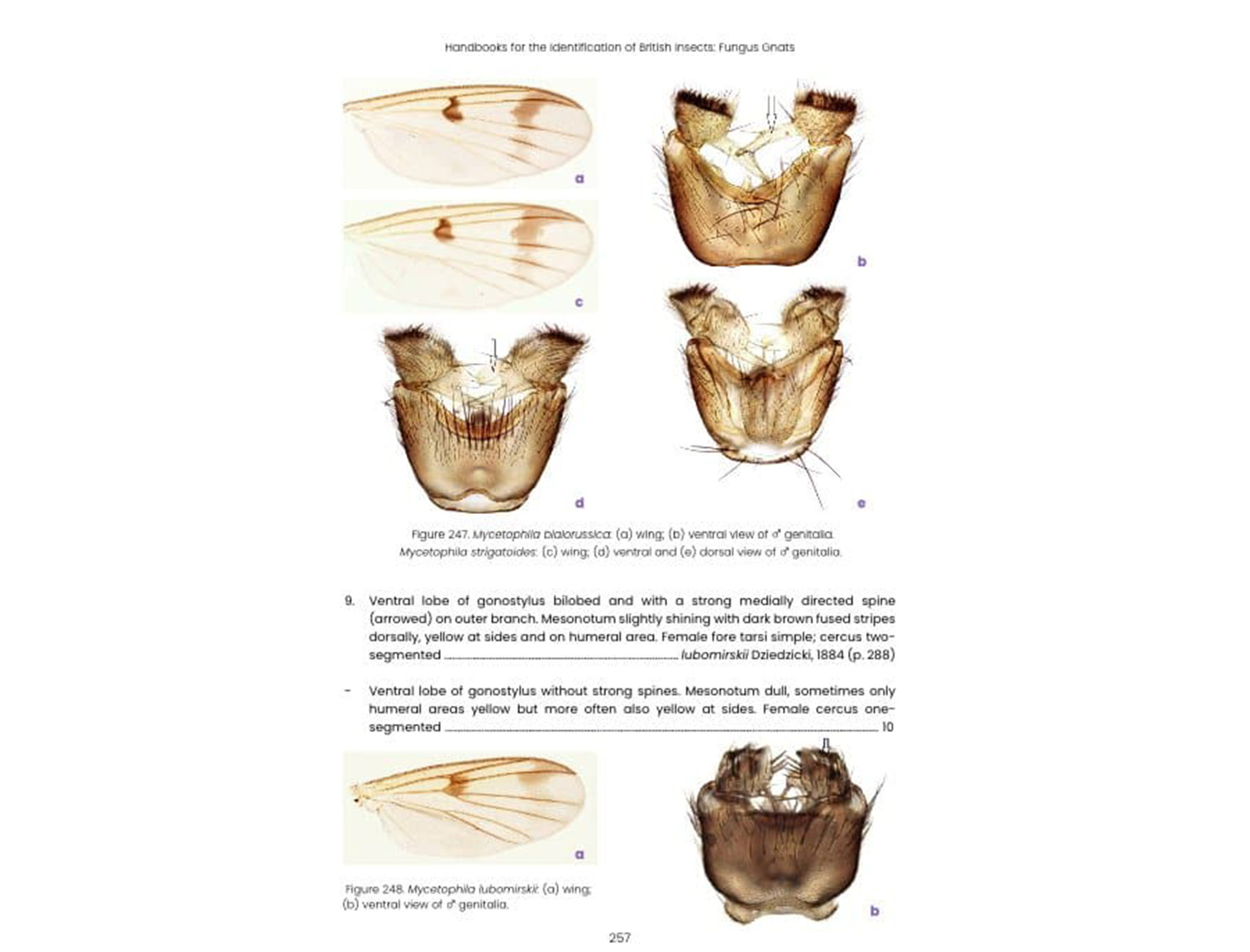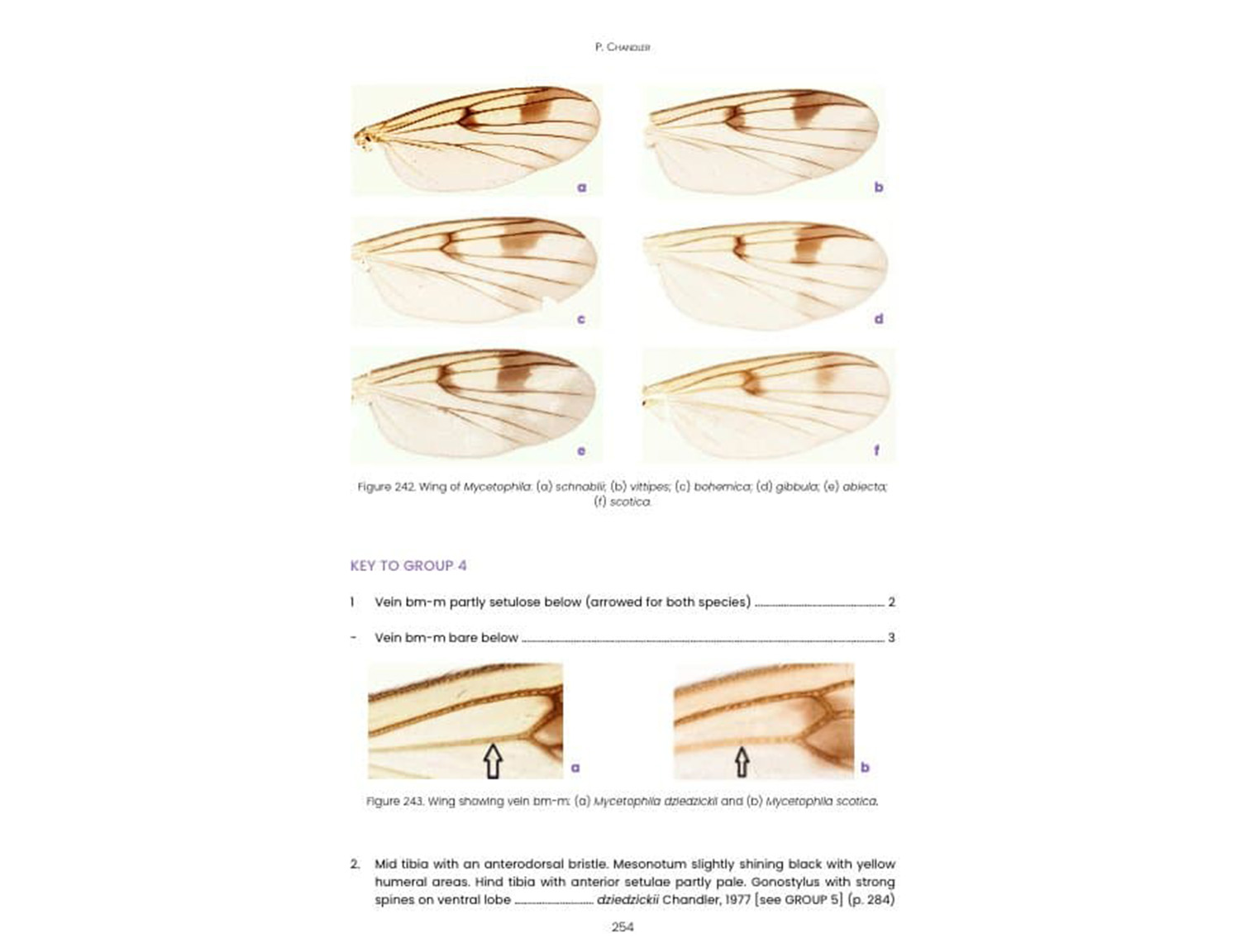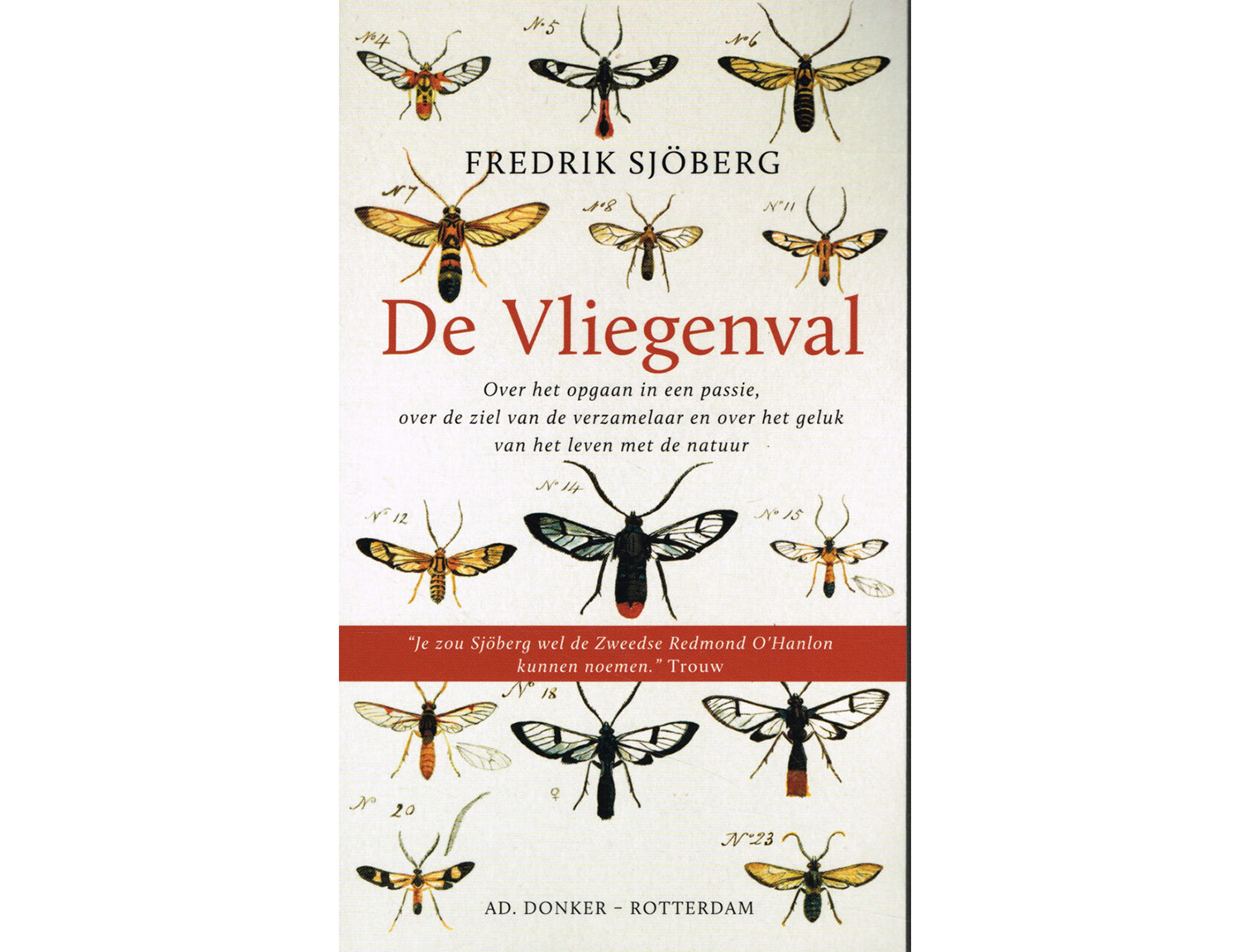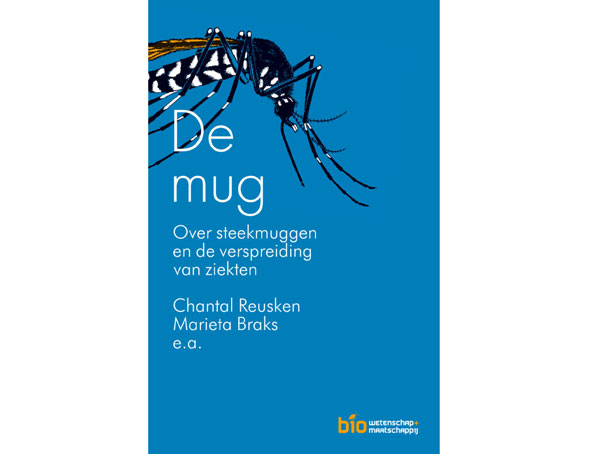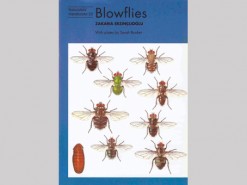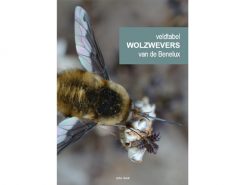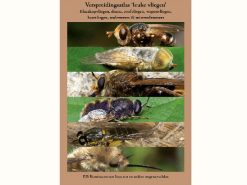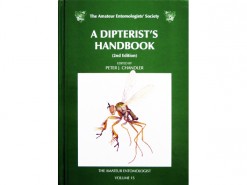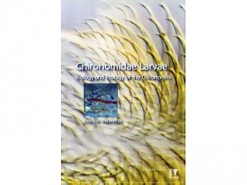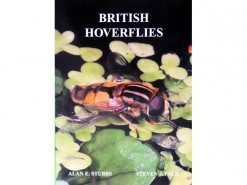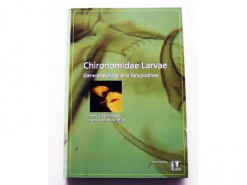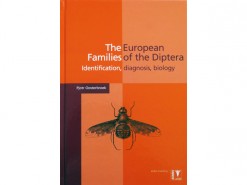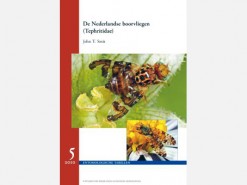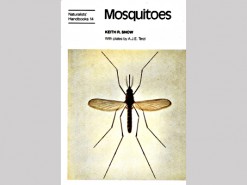The Fungus gnats RES Handbook covers the subfamily Mycetophilinae of the family Mycetophilidae. It contains identification keys to the 27 genera and 334 species occuring in Britain and Ireland. Colour photographs of important characters feature throughout. This guide complements Hutson et al. (1980), which covers the rest of the British list.
In the British fauna, fungus gnats comprise 574 species in five families. The majority (501 species) are in Mycetophilidae. This Handbook includes guidance on how to distinguish fungus gnats from other Diptera and how to recognise these five families. An earlier Handbook (Hutson et al. 1980) covered all except the largest subfamily Mycetophilinae.
While many other Lower Diptera are aquatic as larvae, fungus gnats are terrestrial in their developmental stages. They are exclusively mycophagous, and so as a result are most numerous in wooded habitats. Fungus gnats may be found throughout the year, but adults peak in early summer and autumn. Overall about half the British species have been reared to date, and a systematic list of fungus hosts is provided. However the larval biology of many species is still unknown, so there is plenty of scope for new observations.
Sampling for fungus gnats is reasonably straightforward. Sweeping with a net along suitable microhabitat in woodland is effective, such as stream banks, sheltered slopes and hollows. Sap flows from trees attract some species. Flight interception traps on decaying trees can be very productive, especially in partially-wooded habitats such as parkland and orchards.


